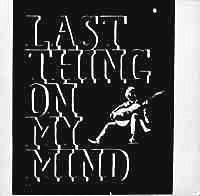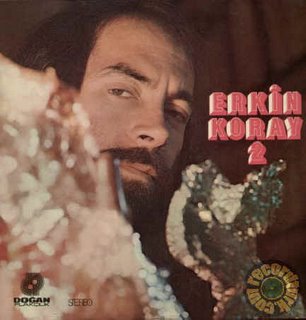23-07-06 - 30-07-06
Saturday, July 29, 2006
The Poppy Family - A Good Thing Lost
 The Poppy Family - A Good Thing Lost
The Poppy Family - A Good Thing Lost02 Free from the City 02:18
03 What Can the Matter Be ? 02:16
04 Which Way You Goin' Billy ? 03:23
05 Happy Island 02:53
06 There's No Blood in Bone 03:01
07 A Good Thing Lost 02:03
08 You Took My Moonlight Away 02:43
09 Shadows on My Wall 02:30
10 That's Where I Went Wrong 02:32
11 Where Evil Grows 02:51
12 I Was Wondering 03:02
13 Tryin' 03:02
14 Winter Milk 03:24
15 Good Friends 02:39
16 I'll See You There 03:20
17 You Don't Know What Love Is 02:49
18 I Thought of You Again 02:27
19 Another Year, Another Day 02:35
20 Evil Overshadows Joe 02:29
21 That's Where I Went Wrong [US Version] 02:33
Susan Pesklevits and Terry Jacks met in the band Powerline. They later married and formed the Poppy Family in 1968. With guitarist Craig McCaw and percussionist Satwan Singh, the duo's third single, "Which Way You Goin' Billy," became a hit in the U.S. and their native Canada, selling over two million copies. The group recorded three albums in the early '70s: That's Where I Went Wrong and Which Way You Goin' Billy in 1970 and Poppy Seeds in 1971. Terry and Susan were divorced by 1973, however, and both began solo careers. Susan released Dream (1976), Ghosts (1980) and Forever (1982), but Terry became more successful when his "Seasons in the Sun" single went platinum in Canada (more than 150,000 units). His albums include Seasons in the Sun (1974), Y'Don't Fight the Sea (1976), Pulse (1983) and Into the Past (1989).
~John Bush, All Music Guide
get it here
part II
Eilrahc Elddewt (Charlie Tweddle) - 1974 - Fantastic Greatest Hits
2. Untitled
3. Untitled
4. Untitled
5. Untitled
6. Untitled
7. Untitled
8. Untitled
 Extra Tracks :
Extra Tracks :9. Untitled
10. Four Empty Bottles
11. Untitled
12. What's Happening ?
13. Jesus and the Devil
14. Untitled

Eccentric folk artist Charlie Tweddle's self-released 1974 LP Fantastic Greatest Hits,
a unique blend of psychedelic country and tape experiments.
Charlie felt sure his new style of music would take the world by storm – it didn't work out that way.
Recorded in 1971, 500 copies of Fantastic Greatest Hits were pressed in 1974 under the name Eilrahc Elddewt with extravagant packaging.
The LP was hand-distributed and received only minimal positive feedback; sales were poor.
 Why? Well for one, side two of the album is 25 minutes of chirping crickets and sound fragments.
Why? Well for one, side two of the album is 25 minutes of chirping crickets and sound fragments.The abrupt patches of dead air on side one probably didn't help much either.
More than a few of these albums were returned as "defective".
Of course, all of these production moves were intentional.
The CD was transferred from a copy of the original album.
It includes six unreleased tracks from the same period as well as all of the original artwork in a fold-out digipak.
We hope you find it as nice and as interesting as we do.

Last Thing On My Mind - Holyground The Works Volume One
side one
* Last Thing On My Mind (Levon-Coombs)
* Hangman (traditional) *
* Greenland Whale (traditional)
* Factory Sparrow (Hart)
* Geordie (traditional)
* It Ain't Me Babe (Dylan)
* Mountain Dew (traditional)
* Daddy You Been On My Mind (Dylan)
* Part Two Blues (Piff Parfitt)
* One Too Many Mornings (Dylan)
side two
* Bells of Rhymney (Seeger-Davies)
* Sean South of Garryowen (traditional)
* Just A Little Rain (Reynolds)
* La La Girl (Hart)
* Stagnation (Piff Parfitt)
* In the Early Morning Rain (Lightfoot)
* Blue (Seeger) *
* Cushie Butterfield (traditional) *
* The First Time Ever I Saw Your Face *
* When the Ship Comes In (Dylan)
* Baby Don't Drag Me Down (Hart)
 NOTES
NOTEStracks marked * are not on the Works re-release due to technical reasons.
Sold mainly in Bretton Hall College, Yorkshire, England. Copies pressed 99
Re-release : Volume 1 of Holyground the Works series.
* Additional tracks on the Works issue are:
from the EP Cross-section
* Wild Mountain Thyme (traditional)
* With God On My Side (Dylan)
* Lowlands (traditional)
others:
* London (Coombs-Blake)
* The Gold Of The Long Girls
(Levon-Coombs)
Compilation of period '60's UK folk from the Bretton Hall collective.
Recorded in 1966, and in perfect quality, this contains plenty of traditional tunes done in a variety of styles and includes : Dave Nuttall, Chris Coombs, Terry McCann, Kev Slater, Bob Hart and many more.
LAST THING ON MY MIND has never been released since the original 99 vinyl copies made by Mike Levon when he recorded it in 1966. It is an album of folk and early folk rock - the roots from which Holyground grew. There are standout performances from Chris Coombs and others.
It's an album of great beauty: if you close your eyes you can see the candles, and feel the dark . . .
There are also several out-takes and contemporary recordings never previously released at all!
Holyground used to be a record label that released a bunch of albums that are very hard to find. Well, that's the info I could derive from the not so very clear website.
The first releases are two compilation albums called The Works Vol. 1 - Last Thing On My Mind and The Works Vol. 5 - Gagalactica.
As far as I could find out, the Holyground label, or at least the idea behind it, was led by Mike Levon. He recorded musicians, most of which weren't professional musicians. The music is folk, with a touch of folk rock. That's what the booklet says. It's a lot of Bob Dylan (five Bob Dylan songs on Vol. 1) and a load of traditional folk songs. However, what I think of when I hear the term "folk" is Planxty. This is mostly acoustic guitar and vocals, style and atmosphere of scout campfires.
Vol. 5 contains more musicians per recorded song. A full band on most of them, actually.
The songs are definitely more interesting because of this, especially when you're listening to all the songs on the CD. The playing is more interesting (guitar and organ and flute), and the songs have some instrumental bits as well. The songs remain short stories of folk and a bit of blues structures. Overall, again it's boredom creeping up after a couple of minutes.
The musicians and singers are not bad, though. Especially the Dylan songs - no one sings worse than good ol' Bob. And I must say the recordings sound very good.
Amazing that recordings done on a mono track of a two-track recorder can sound so clear.
A job well done! Also the booklets; they contain many old photos, most lyrics and some info.
Friday, July 28, 2006
Zerfas - 1973 - Zerfas
The structure of the album is impeccable. From the opening moment, it’s obvious you’re in for something truly special. “You Never Win” fades in with a backwards loop, over which a lovely melody appears. It goes on for a while, but could continue for hours more without becoming tiresome. It’s as great and true a musical moment as there has ever been. Rudely, the drums disrupt the calm to begin the body of the song, an updated 60s garage punker with powerful organ. As the song nears the end, the opening melody recurs, only this time it’s played forwards. It’s at this moment that you realize that this album is a true work of art, not just a bunch of great moments but a perfectly conceived synthesis of ideas. If only to prove the point, within a few seconds of the next song, “The Sweetest Part,” we are treated to the most beautiful fuzz guitar riff in history. As the album moves along, all of the eight songs have moments that, while unlikely to match the perfection of the backwards bit or the searing fuzz riff, should send shivers down the most jaded spine.
 The songs are enlivened by psychedelic experiments that range from the slowed-down laughter of a tickled child to someone belching the words “mushroom soup.” Not just each song, but each verse is arranged with intricate care, and surprises like the stunning percussion that ends the quiet “I Need It Higher” keep the listener guessing. The two songs that begin side two show a bit of the spirit of 1973. The bouncy “Stoney Wellitz (and its almost trendy moog solo), and “Hope”, with its ocean sound effects and long, layered keyboard solo, are longer and more likely to appeal to, say, prog fans, than the pop-oriented songs on side one. That’s not to say the seem out of place or don’t work, because they do, in spades. And in no time at all, we’re back to massive walls of 60s-inspired psychedelia. The introduction to “Fool’s Parade” is interrupted by a stunning backwards vocal (don’t listen to people who claim it says something; it’s gibberish in both directions.) The body of the song ends after only two minutes, only to be followed by two further minutes of sped-up guitar, slowed-down guitar, space sounds and the aforementioned “mushroom soup” reference.
The songs are enlivened by psychedelic experiments that range from the slowed-down laughter of a tickled child to someone belching the words “mushroom soup.” Not just each song, but each verse is arranged with intricate care, and surprises like the stunning percussion that ends the quiet “I Need It Higher” keep the listener guessing. The two songs that begin side two show a bit of the spirit of 1973. The bouncy “Stoney Wellitz (and its almost trendy moog solo), and “Hope”, with its ocean sound effects and long, layered keyboard solo, are longer and more likely to appeal to, say, prog fans, than the pop-oriented songs on side one. That’s not to say the seem out of place or don’t work, because they do, in spades. And in no time at all, we’re back to massive walls of 60s-inspired psychedelia. The introduction to “Fool’s Parade” is interrupted by a stunning backwards vocal (don’t listen to people who claim it says something; it’s gibberish in both directions.) The body of the song ends after only two minutes, only to be followed by two further minutes of sped-up guitar, slowed-down guitar, space sounds and the aforementioned “mushroom soup” reference. This is all set-up, though, for the album’s finest moment, the closing “The Piper.” A more ideal pop song is unlikely to exist. From the opening piano trills to gorgeous verses to gorgeous bridge to gorgeous chorus to stunning keyboard solo to the most perfect of the album’s many perfect guitar solos, in just four minutes they’ve done the impossible. They top what came before. The album ends on the final moment of genius; the piano trill returns and then is abruptly cut off, leaving the listener with his or her mouth hanging wide open. Not only has the song itself been framed by the piano, so has the album as a whole; the first and last song share the framing device, and the abrupt end is as compelling as the backwards fade-in.
This is all set-up, though, for the album’s finest moment, the closing “The Piper.” A more ideal pop song is unlikely to exist. From the opening piano trills to gorgeous verses to gorgeous bridge to gorgeous chorus to stunning keyboard solo to the most perfect of the album’s many perfect guitar solos, in just four minutes they’ve done the impossible. They top what came before. The album ends on the final moment of genius; the piano trill returns and then is abruptly cut off, leaving the listener with his or her mouth hanging wide open. Not only has the song itself been framed by the piano, so has the album as a whole; the first and last song share the framing device, and the abrupt end is as compelling as the backwards fade-in.No, this album isn’t completely perfect. I’m not entirely convinced that the speak-singing on “You Never Win” really works, and perhaps the plethora of clever arrangement ideas push both “Stoney Wellitz” and “You Don’t Understand” a verse too long. Oh, and this will never be my own personal favorite album because the lyrics don’t hit home with me in the way something has to in order to be a #1 desert island pick. But musically, there’s no album on this universe I enjoy more than ZERFAS, and no album from which I can discover more new joys after hundreds of listens. The first reissue of this album contains several pages of notes about the band, and presumably gives some idea why they never released any more music. I’ve never found this issue of the record; I’m not sure I even want to know the answer to the many questions I have about these guys. And, oddly, the fact that it was never followed is almost a plus, a way of making sure that this album’s greatness will never be tarnished by the company it keeps. Obviously my view on this album is full of bias; only a few people will love it quite as much as I do. But most will love it almost as much.
GET IT
Thursday, July 27, 2006
Gagalactyca - Gagalactyca
 Gagalactyca - Gagalactyca
Gagalactyca - Gagalactyca[Holyground, the Works, vol. 5]
Gagalactyca
ALBUM:
1 GAGALACTYCA (Holyground HG 1135/Magic Mixture MM 3) 1990 SC
NB: (1) reissued on CD (Kissing Spell LSG 007) with bonus tracks from Thundermother.
Only 425 copies of this album were pressed and it came with a free booklet.
Despite its late release date it's actually comprised of previously unreleased early seventies material by the two bands, Lightyears Away and Thundermother, who were responsible for the Astral Navigations album.
GAGALACTYCA has only been released on vinyl. It is a sister album to Astral Navigations.
There are two "sets" of music : Chris Coombs and others (Lightyears Away), and Thundermother. Chris and Mike Levon wrote songs for the Light Years Away "side" of the album. Standout tracks are the short though beautiful "That Is What We Need", and "Cold Tired and Hungry" a storming track featuring Bill Nelson on guitar.
This is mainly the follow-up album to the highly collectable "Astral Navigations" album from 1973. Rare early '70's privately pressed spacey folky prog mostly recorded with a similar line-up to the Astral Navigations album. The music continues the same vein of spacey progressive folk music, and now comes with half a dozen bonus tracks from Thundermother - some of which are also quite trippy. Cosmic and rare as hell.
get it here
Tim Hollier - 1968 - Message To A Harlequin
 Tim Hollier - 1968 - Message To A Harlequin
Tim Hollier - 1968 - Message To A HarlequinMessage To A Harlequin
Bird Of Paradise
Hanne
Jimmy
Do You Remember When
Streets Of Gold
side two:
And Where Were You That Morning Mr. Carroll
Full Fathoms Five
And I
In The Light Of Sadness
In Silence
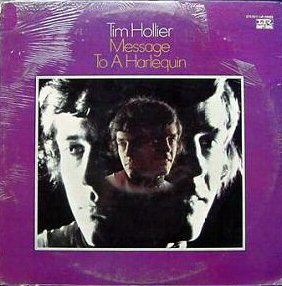
GET IT
Wednesday, July 26, 2006
Chico Magnetic Band (France) - 1969 - Chico Magnetic Band
 Chico Magnetic Band (France) - 1969 - Chico Magnetic Band
Chico Magnetic Band (France) - 1969 - Chico Magnetic BandTracks :
01 - Explosion
02 - Pop Full Hair
03 - Lot Of Things
04_-_We_All_Come_and_Go.mp3
05 - To Where I Belong
06 - My Sorrow
07 - Cross Town Traffic
08 - Pop Orbite
EVEN THOUGH THIS ABSOLUTELY BRILLIANT and overwhelming album is but a half an hour in length, it is so chock full o’ balls and amazing riffs that consistently making all the right moves at the right times it’s downright scary and seems twice the length due to its raging density of vision. Given that (and that fact it seems almost entirely culled from moments from only the top tier fab waxings in my collection) it also seems far longer than THAT because everything on it counts SO BAD it lights a fire in my head, creates a fevered dickswell and comes close to bursting my heart every time I spin it.
 Why? Put it simply, this freakin’ album has EVERYTHING. And by that I mean it draws from elements of approaches set down by “Phallus Dei”-era Amon Düül Zwei, The Jimi Hendrix Experience, Silberbart, Straight-era Alice Cooper, Can, Guru Guru, Groundhogs, Speed Glue & Shinki, Led Zeppelin, Captain Beefheart & The Magic Band, Tiger B. Smith and “Free Your Mind”-period Funkadelic (so help me Eddie) and are seamlessly wedged into one album.
Why? Put it simply, this freakin’ album has EVERYTHING. And by that I mean it draws from elements of approaches set down by “Phallus Dei”-era Amon Düül Zwei, The Jimi Hendrix Experience, Silberbart, Straight-era Alice Cooper, Can, Guru Guru, Groundhogs, Speed Glue & Shinki, Led Zeppelin, Captain Beefheart & The Magic Band, Tiger B. Smith and “Free Your Mind”-period Funkadelic (so help me Eddie) and are seamlessly wedged into one album.Chico IS...The Man. And he is immersed in an ocean of non-verbal language ranging from expressions of spittle-speak to larynx yank projected over a cranked up to fuck-off level trio projecting unbridled heaviosity heaved onto an LP with all the intimacy of a band that lives, breathes, farts, cries, bleeds, sweats, shits, pisses, vomits, cums, eats, buys pot and gets high together. And as if by some process of psychotropic osmosis all are locked into the same psychic force field that alternatively is searching in the wilderness, crying to the sky, crawling just beyond Damascus with their flies and minds undone and their heads on fire with all their passion directed into a funneled pummel that is undying energy the same way life itself is. And its raging power and whirlwind qualities are caught as they claw at the double iron gates of reality to get buzzed into the realm of the beyond with their stinky package of love special delivery, looking for the big old rock’n’roll godhead to sign for it and they wind up shoving it under his nose and promptly fucking off to parts unknown forever after the bittiest output of one album and 3 singles for three separate labels (whose chronology is probably determined by the lessening obscurity of the companies with “Girls Of Ocean”/“Phantasm” on Tuba; Disques Vogue’s issue of two album tracks as “My Sorrow”/“We All Come And Go” and one single on CBS, “Pop Or Not”/”Inverse Pop”.)
 Formed in Lyon in 1969 as Chico & The Slow Death because they meant it (man), the following year they renamed themselves Chico Magnetic Band, comprised of: Chico on death throttle vocals, Patrick Garel on pounding dunderhead drums, Alain Mazet on Richter scale raising bass and Bernard Monneri on howlingly fierce shred guitar with attached fuzz/wah hardwired directly into his frontal lobes. And what this crew laid down was a freewheeling and loose mess that created its own language, cycling as it does through a back catalogue of the collective id, the rejected odd and the accepted stinky -- as though every emotion every uttered for generations and every symbolic thrust of the battering ram against the gates of nothingness have touched down all on one album with an overdose of ESP.
Formed in Lyon in 1969 as Chico & The Slow Death because they meant it (man), the following year they renamed themselves Chico Magnetic Band, comprised of: Chico on death throttle vocals, Patrick Garel on pounding dunderhead drums, Alain Mazet on Richter scale raising bass and Bernard Monneri on howlingly fierce shred guitar with attached fuzz/wah hardwired directly into his frontal lobes. And what this crew laid down was a freewheeling and loose mess that created its own language, cycling as it does through a back catalogue of the collective id, the rejected odd and the accepted stinky -- as though every emotion every uttered for generations and every symbolic thrust of the battering ram against the gates of nothingness have touched down all on one album with an overdose of ESP.Released on the tiny Disques Vogue subsidiary label Box Office, “Chico Magnetic Band” was recorded at two different Parisian studios: Europa Sonor (where Magma recorded their first album and Aphrodite’s Child laid down their classic “666” double album) and Wagram Studios. And judging the results of those last two named records, Europa Sonor had some uniquely sounding rooms on their premises, which carried over with the widest sonic spectrum onto “Chico Magnetic Band”. Producer Jean-Pierre Rawson boisterously captured the group’s thunder live in the studio as clear as an unmuddied lake while also resounding with an unstoppable fury. These sounds are everything I search for in rock’n’roll -- it’s tripped out. It’s psychedelic. It’s heavy. It’s very heavy. It roots me to the ground AND it’s got experimental electronic freak outs as well as moments of chilling acoustic introspection that can only portend heavy shit raining down and they never made an umbrella THIS strong to withstand such a torrent. It’s heavy to the soul as well as to the ears, and its not only as bold as love but it’s bolder than fuck and although it only lasts for a half an hour look out because there’s a fire in the hole cause Chico and The Magnetic hommes are not only coming through, but coming through in the biggest way possible.
“Explosion” begins the album not with a whimper nor even a bang but Chico’s entire reason for existence, laid out in one glorious collision after another with Chico yammering, barking, guffawing and channeling consonants in a way irrespective of enunciation and rarely with a literal clue as to what he is freaking out so badly over as his ever-heaving, pulsating soul forces out a welter of incomprehensible sounds in such a riveting and demonstrative manner, they almost make even Damo Suzuki’s English/Japanese/neither dreamtime-to-Samurai-rage vocals seem like the Queen’s English by comparison. Sometimes Chico isn’t singing so much as speaks, whispers or just freaking out at the open air around him as the Magnetic Band furry-freak to it all with total free-rock heaviness. The middle section is somewhat related to Deep Purple’s “Mandrake Root” instrumental break, but minus the Hammond, plus a full-on percussion section and a million times crazier as Chico goes gaga -- at one point whispering then choking out wave after wave of larynx attack in a spittle-spraying frenzy. The percussion line of franticness hangs so long and hollowly behind Chico’s half-spoken, half-muttered, half-laughed and near incomprehensible pronouncements that only point to certain meanings that are instinctively grasped, but cannot be explained, only felt. He’s dropping consonants and vowels left, right and centre and I can only make out “My sweat tastes like a river!” until it’s directed into a 4-lane highway of vocal gibber along the lines of: “Nuuuaaarrgugug!”, “Nene waundah orf zarebbb!” and even “Anmyne cloth iss fallin dawn!!” And the guitar playing is exemplary -- the fuzz wah-wah is used only to shattering degrees for maximum effect --and often. Then Chico’s hairy freak-speak re-enters, translating everything into a random free-form gear stripping speech that abides to no known patterns of human language as behind him the band pump out and wrestle up storm up with each perfectly timed drum fill, each burnt fuzz-o-delic guitar lick accented to perfection and those low grunting Tiger B. Smith vocals getting it all on at once is just crazy... especially for this long. Somehow, the piece finally ends with a deluxe CLANG!-HONK!-TWEET! And you don’t really know if it all really happened out loud or what.
Is it heavy?
Yes.
Are they French?
WEEE.
The entire album could just be this first track, and it would STILL be a killer.
Ooh-la-fucking-la.
The instrumental “Pop Pull Hair” sees the entry of electronic technical effects let loose by the French experimentalist Jean-Pierre Massiera, and it is far spacier and heavier than the collages he assembled on his previous Les Maledictus Sound LP. The entire track runs backwards with UFO landings, creeping, sucking sounds and an aural casting of long shadows getting longer that threaten to absorb the mental landscape with successive, ominous strides. The quiet entry of “Lot Of Things” and a descending bass begins watchfully like “Sleeping Village” and/or “Brain Brain” by Silberbart with overall “Careful With That Axe” eugenics, as cymbals tap in the darkness. This quickly rises into a shattering display of lurching, blazing guitar accompanied with deeper toned Hendrixian quiver-speak as Chico’s words only SOUND as if they’re run backwards as they dribble out from his mouth like blood. Another tempest hammers out by the band at top volume, and then falls away to another simmering comedown. But when THAT guitar solo ensues so unbelievably heavy, before you fully recover from it it’s onto riffing off the “Beck’s Bolero” section of ‘How Many More Times” with the band in tow and Chico probably flailing on the studio floor and speaking of which: HOW many more times can this record continue to outdo itself?!! Chico then starts freaking in the echoed darkness with pronouncements like Don Van Vliet and Damo Suzuki in a self-strangulation contest ala Vliet’s palsied “Neon Meate Dream of An Octafish” tongue flapping drool-o-thon, “Tra la, tra la, tra la, tra la…tra LA” choking and sputtering well into the fadeout. With strident, thundering drums “We All Come And Go” cracks open and all is blistering Rock once more and nothing else. The middle section sees Chico’s hastily rushed out vocals crazily falling out into a pile of letters that only assemble in time against a distinctly Biergarten schlager for swingin’ steins-accented melody when he (nearly) sings the title “We all come and go...” Swiftly, the band is already locked in together and promptly off across the instrumental section highlighted by a stunningly blistering guitar solo as Patrick Garel’s double time drumming swings between the legs while simultaneously nails down every virgin space in sight and the whole band is giving each other so much damn space to blast off that they never miss a beat with all those quick, vertiginous stops and starts...
Side two is just as excellent. “To Where I Belong” opens with a brief electronic swizzle into hyperspace that parts to reveal Chico plus his ever-Magnetic Band playing bongos with cross-stitched acoustic guitars like 1970-period Can jamming in the back garden of Schloss Norvenich. Returning electronic tones whoosh by and vacuum the whole mess up and replace it with cyclical riffs peeled offa Amon Düül Zwei’s creeping, nightmarish “Dem Guten, Schönen, Wahren” as acoustic and electric guitars pull together to construct an epic mystery dance. Then it’s a brutal shift into the furious paces of the electric intro/break-out of Zep’s “Bring It On Home”, continuing to hammer it all home all and drape it with downer wah-wah action to make it all the more explosive...to return directly back to the Düül death dance scene, which then rears its screeching head back to the previous fury. Somehow, it’s left a stoned trail of mental breadcrumbs and finds itself back to the earlier acoustic passage and a final fade. Things slow down with the ooze away funk of “My Sorrow” all furrowed by Chico’s backward-masked-but-not-really drawl vocal that drags through the primeval soup of creation over clattering percussion accented by searing wah-wah and adorned with a fantastically screeching run-on sentence of a wah-wah’ed guitar solo. It’s so in the pocket, it’s hung like Iommi’s engorged stash pouch on the gatefold of “Paranoid”. Damn -- this has got to be the closest thing to 1970 period Funkadelic outside of “Chains And Black Exhaust” and, er “Free Your Mind And Your Ass Will Follow” itself, come to think of it.
“Cross Town Traffic” is a RIDICULOUS cover and not because it’s inept. It only roughly approximates the Jimi Hendrix Experience track in its shorthanded tongues and soulful misappropriatin’ and the way first verse is sang with the music resigned way to the background all dub-like and no guitar doing the “doo doo doo l’doo” ‘backing vocal’ call and response... Dammit -- it is SO fucking loose I betcha Jimi hisself woulda dug how Chico slit it up such a furious treat (maybe even more than Dylan did when Jimi ran rampant all over “All Along The Watch Tower” and/or “Drifter’s Escape”) especially as Chico amends the line “And with you/I can see a traffic jam straight up ahead” speedily into “And I guess there’s no chance/sit on my head!” thus shattering another blues metaphor in the process. This is ridiculous, all right: Chico’s version of “Cross Town Traffic” is an example of getting “it” effortlessly by just going for it whichever way you can and making it all fall together seemingly by sheer force of will and soul alone. “Pop Orbite” finishes the album as Chico and His Mag(net)ic Band get a full-on interstellar send off via the “effets techniques” of Jean-Pierre Massiera as burbles, squeaks and Martian effects surround the band together on its final trudge into the abyss with accompanying Hammond organ and French screaming... All the album lacks is one big explosion FX to end it all.
Do I need ANTHING else from a record? Fuck, man: “Chico Magnetic Band” stands tall as the spiritual column of that burnt pantheon of heavy truth seeking alongside the Vertigo pressing of “Black Sabbath”, Alice Cooper’s “Pretties For You”, Guru Guru’s “Hinten”, Silberbart’s “4 Times Sound Razing” and Speed Glue & Shinki’s self-titled double LP.
(BEWARE: Although ‘Chico Magnetic Band’ appears printed on Lizard Records’ CD reissue, some have been discovered to be accidentally pressed with an entirely different album altogether. Needless to say, it’ll help to look for it in a shop where you can preview before purchasing and remember that the real deal album contains 8 tracks and does NOT begin with an skimpy acoustic folk ballad by Methvseleh! There is also a vinyl re-issue available, which probably circumvents this problem entirely.)
Rale - 2000 - Soumrak (Twilight)

01. Twilight
02. Záblesk 1
03. Amenoyuki
04. Záblesk 2
05. V Plameni
06. Záblesk 3
07. Biale Mrozy
08. Záblesk 4
09. Moondance
10. Záblesk 5
11. Bludiste
12. Záblesk 6
13. Nedojdes
14. Záblesk 7
Josef Ostransky Accordion, Darbouka, Group Member, Bass, Guitar (Acoustic), Percussion, Vocals, Guitar (Electric)
Cynthia PhungNgoc Dancer, Viola, Vocals
VladimÃr Václavek Bass, Liner Notes, Vocals, Percussion, Guitar (Acoustic), Djembe, Group Member
Petr Vavrik Mastering
Klement Jochymek Engineer, Mixing
Ivo ViktorÃn Engineer, Mixing
Andrea Konstankiewicz Cello, Vocals, Group Member
Takumi Fukushima Viola, Vocals, Violin
Milos Dvoracek Drums, Percussion
This truly is the most beautiful album the Czech label Indies has released, in every way.
First, the music: The result of a group effort, the songs are filled with haunting melodies, refined string arrangements (violin, viola, cello) counterbalanced by a visceral approach to rhythm (only hand percussion and shouts), and intricate vocal interplay among the five members, all singers.
This is somewhere between Czech folk-pop and progressive rock, although these terms lose all meaning on such fertile soil. Lyrics span many languages, each sung by a different musician:
Czech (Vladimír Václavek and Josef Ostransky), French (Takumi Fukushima), English (most of them), Polish (Andrea Konstankiewicz), Vietnamese (Cynthia Phung-Ngoc), Japanese (Fukushima), and Spanish (guest Frank Micheletti, as if the others weren't enough).
They shift from one to another naturally, often combining three languages at the same time, three voices humming lines from different directions.
The album was recorded in June 2000, only three weeks after the death of friend and collaborator Laurent Letourneur (he was 29). "Twilight" begins with a recording of him singing the main text of the piece. The rest of the ten-minute suite builds on this quiet opening, reaching a very emotional climax, exorcising the emotions to let the other pieces open on something more positive. The production is excellent and the lavish booklet makes clever use of the group's multilingual talents. For anyone interested in Iva Bittová (with whom Václavek recorded Bilé Inferno), Tara Fuki, or even the feminine grace of After Dinner ("Amenoyuki" could fit on Haco's first solo album), this CD is essential listening.
Highly recommended.
~François Couture, All Music Guide
Tuesday, July 25, 2006
Focal Point - First Bite of the Apple
1 Miss Sinclair
2 Sycamore Sid
3 Hassle Castle
4 Never Never
5 Lonely Woman
6 Far Away From Forever
7 Love You Forever
8 Tales From the GPO Files
9 McKinley Morgan The Deep Sea Diver
10 Falling Out of Friends
11 Girl on the Corner
12 Goodbye Forever
13 This Time She's Leaving
14 'Cept Me
15 Miss Sinclair (demo)
16 Miss Sinclair (Alternate version)
17 Hassle Castle (Demo)
18 Never Never (Alternate version)
19 Reflections (Demo)
20 Reflections
 This band is great, they're also included in several compilations, they're in a pop/psych way like Grapefruit or The Iveys and sometimes more poppy than psych. If you want a complete info and history check this out.
This band is great, they're also included in several compilations, they're in a pop/psych way like Grapefruit or The Iveys and sometimes more poppy than psych. If you want a complete info and history check this out.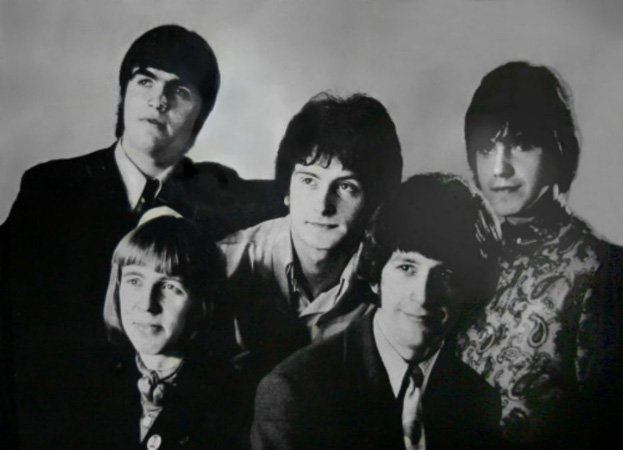 I have worked a lot to find this album, so grab it and do not make me cry :O
I have worked a lot to find this album, so grab it and do not make me cry :OSee you soon!
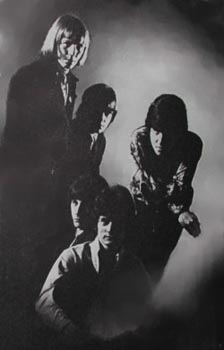 Get Part_1
Get Part_1Get Part_2
CT 1,3&4
Liz Damon's Orient Express - 1971 - Liz Damon's Orient Express
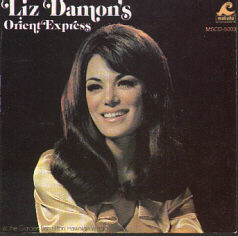 Liz Damon's Orient Express - 1971 - Liz Damon's Orient Express
Liz Damon's Orient Express - 1971 - Liz Damon's Orient ExpressTracks :
01. 1900 Yesterday
02. Something
03. But for Love
04. You Make Me Feel Like Someone
05. Bring Me Sunshine
06. You're Falling in Love
07. Everything Is Beautiful
08. That Same Old Feeling
09. (They Long to Be) Close to You
10. Let It Be
11. Heaven in My Heart
12. Quando, Quando Quando
13. Canadian Sunset
14. Wave
15. Danny Boy
Liz Damon's Orient Express
Liz Damon's Orient Express was a 1970s band from Hawaii, featuring lead singer Liz Damon, two female backup singers and a rotating backup band. The name apparently derived from the original backup band being entirely Asian. Their only song to make the Billboard Top 40 was "1900 Yesterday" which made it to #33 on the US and #16 on the Canadian charts in early 1971.
The band was the house band at the Hilton Hawaiian Village's Garden Bar for 18 months and recorded its first album, At the Garden Bar, Hilton Hawaiian Village in 1970. Originally released on Makaha Records, it was then picked up by White Whale Records, who released it as a eponymous album and also released "1900 Yesterday" as a single.
Damon's backup singers on this album were her sister Edda Damon and Sydette Sakauye. In the early 1970s, Sakauye left and was replaced by Meri Pherson. While the Damon sisters and Pherson appeared to be constants, their backup band appeared to undergo numerous personnel changes.
The group released three more albums during the 1970s consisting mostly of covers. In 1979, the group released a comedy album. During the late 1970s, the band moved to Las Vegas where they performed until their breakup in the mid 1980s.
Only Liz Damon's Orient Express is available in print today, and "1900 Yesterday" appears on some compilations of 1970s mellow music.
Discography
Albums
* Liz Damon's Orient Express (1970) (also At the Garden Bar, Hilton Hawaiian Village)
* Try a Little Tenderness (1970)
* Me Japanese Boy (I Love You) (1973)
* Heaven in My Heart (1978)
* WARNING: This Album Could be HAZARDOUS to Your Ego! (1979)
Singles
* 1900 Yesterday (1971) from Liz Damon's Orient Express
Galaxy - 1978 - Nature's Clear Well
Tracks :
1. Nature's Clear Well (10:50)
2. Warning Walls (5:14)
3. I've Come from a World (4:19)
4. You've Really Got it Fixed (4:22)
5. Dreams Out in the Rain (6:22)
6. Wish I Were Happy (6:14)
Norbert Abels : Keyboards, Vocals
Hermann Beckert : Bass
Victor Bergmann : Percussion, Drums
Richard Kersten : Guitar (Acoustic), Vocals
Heinz Kuhne : Guitar, Vocals
Dieter Dierks : Producer, Photography
Galaxy is another mystery band that had received a number of positive reviews elsewhere,
so being the naturally inquisitive type, it was only natural that I would investigate this a little further.
If you have played a disc at least eight times and it doesn't jump up and grab you by the agates,
then there is little chance that paying further attention in repeated listens will alter your perceptions.
Sure, the title track has a great melodious hook to die for, and being over ten minutes long, the players have some time to stretch out,
but in all reality, they only just flex their muscles a tad on what should have been the piece de resistance of this whole album.
The players assembled are certainly adept at their respective instruments,
but the main problem I have detected is the general lack of anything too memorable in the song-writing department.
A brief highlight also appears on the third track called "Warning Walls",
which has a killer section that really works for me, but I'm still looking for more!
The eighth track, "Anais", reminded me very much of the sort of thing that Jan Akkerman was doing with Focus on their Mother Focus album way back in the 70s,
but suffers slightly as it has all been done before, and to a better degree.
Considering there is so much great progressive music that has been made available,
through obscure classics having been re-issued and the bands of today having picked up from where the originators left off,
music of Galaxy's caliber does tend to be ignored.
Listening to an album like this is very similar to driving in the great outback of Australia.
You have to drive a hell of a long way before you come across some decent scenery.
In a similar way, there is a lot of filler and mediocre music to wade through before you stumble across the highlights,
which while they are admittedly worthwhile when they appear, are far too infrequent and annoyingly short.
- Greg Cummins [November 2001]
Circus Maximus - Circus Maximus + Neverland Revisited

Circus Maximus
Circus Maximus (With Jerry Jeff Walker) - Circus Maximus.
It's that 1967 Summer of Love vibe, with this Texas band that included Jerry Jeff Walker. Solid harmonies, nice guitar (with some cool raga touches) combine with a goodtime feeling and complete this fine slice of US '60s psychy folk/rock.
Circus Maximus - Neverland Revisited.
From 1968, the second album from this Jerry Jeff Walker led Texas quintet. A bit more psychedelic this time round with a strange mixture of swirling Keyboard and fuzz psike-pop imbued with a summery West Coast vibe.
Part I
Part II
Sunday, July 23, 2006
5 videos from The Fuzztones


Twink - The Lost Experimental Recordings
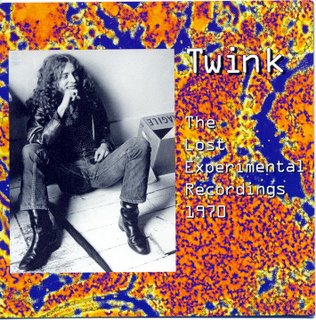 Twink - The Lost Experimental Recordings 1970
Twink - The Lost Experimental Recordings 1970Tracks :
01. Within (:54)
02. Ice Cool (2:20)
03. Unexpected Party (2:19)
04. Witches Brew (2:58)
05. Psychedelic Electrician (Scene 1) (4:24)
06. You Reached For The Stars (2:22)
07. Moon Dog (1:46)
8. You Have Been Chosen (:53)
09. Drum Crazy (5:36)
10. Angel (3:38)
11. King Tin Tagel (1:10)
12. Peter The Pill (2:44)
13. Psychedelic Electrician (Scene 2) (9:54)
14. Psychedelic Electrician (Scene 3) (1:07)
15. Duel At Dawn (4:32)
16. Psychedelic Electrician (Scene 4) (6:09)
This astonishing release from the Pink Fairies, Pretty Things, and Deviants drummer Twink will be a welcome addition to any psychedelic collection. A legendary figure of the U.K. psychedelic scene, he recorded these rock experiments in London's Wizzard Studios in the late '60s to early '70s. Legend has it that Twink had all but forgotten about these sessions until engineer Julian Briggs presented him with tapes in 1999. A remix and remastering session in Los Angeles ensued, and, suspiciously modern as it sounds, one wonders if the session involved a few late-'90s stylistic updates as well. Regardless, the degree of invention and experimentation is astounding, and The Lost Experimental Recordings is an electronic / rock hybrid that predated similar tranced out excursions from German groups such as Can and Faust, and even proto- post-rockers This Heat. In these improvisational sessions, Twink assembled tape loops of noise and electronic collages, over which he would beat out circular trance-like rhythms. Excessive tape manipulation and studio effects are to the fore, and his J.R. Tolkien infatuation provided a conceptual bed for some of the more psychedelic indulgences. An absolute career highlight -- it is ironic that this material was ignored for so long.
~Skip Jansen, All Music Guide
Τhe Shangri-Las - Myrmidons Of Melodrama

Τhe Shangri-Las - Myrmidons Of Melodrama
Τhe Shangri-Las were among the greatest girl groups; if judged solely on the basis of attitude, they were the greatest of them all. They combined an innocent adolescent charm with more than a hint of darkness, singing about dead bikers, teenage runaways, and doomed love affairs as well as ebullient high-school crushes. Originally the Shangri-Las were comprised of two pairs of sisters from Queens, NY (identical twins Marge and Mary Anne Ganser and siblings Mary and Betty Weiss). They had already recorded a couple of obscure singles when they were hired by George "Shadow" Morton to demo a song he had recently written, "Remember (Walkin' in the Sand)." The haunting ballad, with its doomy "Moonlight Sonata"-like piano riffs, wailing lead vocal, and thunderous background harmonies, seguing into an a cappella chorus backed by nothing except handclaps and seagull cries, made the Top Five in late 1964. It also began their association with Jerry Leiber and Mike Stoller's Red Bird label, which would handle the group for the bulk of their career.Unlike some girl groups, the Shangri-Las were dynamic on-stage performers, choreographing their dance steps to their lyrics and wearing skin-tight leather pants and boots that were quite daring for the time.
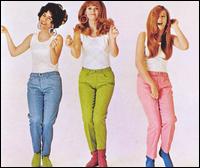
Their real lives, however, were not without elements of drama themselves. Their constant personnel changes baffle historians; sometimes they are pictured as a trio, and sometimes one of the members in the photos is clearly not one of the Weiss or Ganser sisters. Worse, the Red Bird label ran into serious organizational difficulties in the mid-'60s, and wound down its operations in 1966. The group moved to Mercury for a couple of dispirited singles, but had split by the end of the 1960s. Even today, the Shangri-Las' history remains somewhat murky and mysterious; the original members have rarely reunited for oldies shows or talked to the press. The situation was exacerbated by frustratingly substandard reissues of their Red Bird work, which made it impossible to collect all of their fine sides without buying numerous packages, many of which boasted shockingly shoddy sound quality. Happily, the situation was rectified in the mid-'90s with excellent, comprehensive compilations of the Red Bird material in both the U.K. and U.S.

This 33-track production finally sets the record straight, including all of the significant A-sides, B-sides, and album tracks they recorded for Red Bird between 1964 and 1966, as well as an earlier single for a different label, and four radio commercials.
Tracks :
01. Remember (Walking In The Sand) 2:15
02. It's Easier To Cry 2:30
03. Leader Of The Pack 2:52
04. What Is Love 2:23
05. Give Him A Great Big Kiss 2:08
06. Maybe 2:33
07. Out In The Streets 2:49
08. The Boy 2:42
09. Give Us Your Blessings 3:16
10. Heaven Only Knows 2:09
11. Right Now And Not Later 2:37
12. The Train From Kanses City 3:20
13. Never Again 2:22
14. I'm Blue 3:30
15. What's A Girl Supposed To Do 3:05
16. The Dum Dum Ditty 2:24
17. You Cheated, You Lied 2:24
18. I Can Never Go Home Anymore 3:16
19. Bull Dog 2:38
20. Long Live Our Love 3:08
21. Sophisticated Boom Boom 2:10
22. He Cried 3:07
23. Dressed In Black 2:51
24. Past, Present And Future 2:41
25. Paradise 3:14
26. Love You More Than Yesterday 2:39
27. Wishing Well 2:05
28. Hate To Say I Told You So 1:36
29. Give Him A Great Big Kiss 2:14
30. How Pretty Can You Get 0:11
31. Revlon Endorsement 0:14
32. Good Taste Tip 0:52
33. Dating Courtesy Tip 0:56
Your Download-Link:
http://rapidshare.com/files/4807873/shangrilas.rar
V.A. - Trap Door Mix
 V.A. Trap Door Mix
V.A. Trap Door Mix(An International 60's Psychedelic Mystery Mix)
This new compilation from Dis-Joint (record label from the folks over at San Fancisco's world famous Groove Merchant record store) has been receiving some heavy pre-release hype. The subtitle here is "an international psychedelic mystery mix" and they've collected a batch of super rare, funky psychedelic rock from the late 60s/early 70s from all over the world. Keeping with that "mystery" theme, there is no tracklisting, no real info and a whole heap of undercover yap yap going on (awesome cover too by the way). We heard they sent out test presses to some of the top funk/psych collectros out there, all with individually unique covers, and the response has been overwhelmingly thumbs up (check out the soulstrut boards for the proof). It's billed as a "mix" but these tracks can really be taken on their own- there is no real "mixing" to speak of here, no 15 second drum break wind-downs or any of that- which is just how we like it. You'll still want to search out the full tracks in some places, but you get more than enough of the real thing to hold you over.
This is a pastiche of 60s and 70s ultra rare funky psyche songs from all over the world (Korea (San Ul Lim), Italy, Israel, Spain,Canada (J.K & Co), etc.) that is fused together with bizarro samples.
Gathered together from over 44 contries, Internet DJ's and Bedroom Composers gathered to create a tribute to the Intergalactic Bump King's, Trap Door. 16 Dyn-o-mite Tracks pay homage to the album Conscious. Featuring tracks by such international stars of trance like Poe-Pete, King Skeleton, The Apple and On the Money to name a few.
Fans of Andy Votel need this in their life. A mind blowing mix of international Psychedelic mysteries compiled and mix by the great San Fran label Di Joint
With no tracklisting only the most obsessive collectors could probably name some of the tracks on this comp, but that does not mean you will get hooked from the first minute. Tight fresh drum breaks, great pych vocals and fuzzy electronics makes this a compelling listen.
Trap Door is available on both CD and LP formats, and yes, the vinyl is also mixed.
Please, do a comment if you already digg the whole track list of this comp.
Those who can guess the track list wins a pirate's treasure!
Highly recommended!!!
PS: My ultra favourite track of this amazing compilation is No.2 !!
Please, I have to know to whom belongs this gem !
grab and enjoy it !!
Erkin Koray
tracks
1.Şaşkın
2.Eyvah
3.Fesuphanallah
4.Sevince
5.Estarabim
6.Arap Saçı
7.Hayat Bir Teselli
8.Komşu Kızı
9.Gönül Salıncağı
10.Tımbıllı
bonus tracks
11.Ask Oyunu
12.Hop Hop Gelsin
13.Senden Ayri
14.Kiskanirim
15.Yalnizar Rihtimi
Third album of advanced Eastern and ethnic music fusion from Turkish psychedelic master ERKIN KORAY. Recorded between 1972-1976, the tracks on the album were originally released as singles. Includes five bonus tracks from 1967, 1968, and 1971, as well as an undocumented acoustic version of "Yalnizar Rihtimi" from the great "Turkuler" album.

Erkin Koray II 1976
bonus tracks
_________________________________________
 Erkin Koray - 1977 - Tutkusu
Erkin Koray - 1977 - Tutkusutracks
01.Allah Aşkına
02.Mağarada düğün
03.Sandalcı
04.My Delight
05.Bir Olsılık
06.Cümbür Cemaat
07.Sanma
08.Suskunluğun Ötesi
09.Blind Man
10 - Geliyor
11.Yalnız Sen Varsın
Tutkusu is the fourth full length album by Turkish rock star Erkin Koray and was released the year after he did "2", his most ethnic record. With Tutkusu he went back to psych rock and he made it with another masterpiece. Eleven original tracks (two sung in English, the rest in Turkish) that will delight your ears.

Erkin Koray Tutkusu 1977
_________________________________________
Erkin Koray
From Wikipedia, the free encyclopedia
Erkin Koray has been in the Turkish rock music scene since the late 1950s and early 1960s. He is widely acclaimed as being the first person to ever play rock and roll in Turkey; in 1957, he and his band gained notoriety by playing covers of Elvis Presley and Fats Domino. He was also one of the first Turkish musicians to embrace the electric guitar and modern amplification.
By the late 1960s, he was already a major figure in Turkish psychedelic music (also known as Anatolian Rock), beginning with his first psychedelic single Anma Arkadaş in 1967. Koray followed this with a number of singles, both by himself and in collaboration with others, that established him as a force to be reckoned with on the Turkish rock scene. Koray became a controversial figure in Turkey during the 1960s and 1970s; he was actually assaulted in Istanbul, and on one occasion stabbed, for having long hair.
In the early 1970s, he formed the group Ter with the former members of Grup Bunalim (Turkish for "Group Depression"), a power trio styled group. Although they only recorded one single before breaking up, Hor Görme Garibi (a cover of the major Arabesque music hit by Orhan Gencebay) was a smash hit, furthering Koray's career. However, Istanbul Records, unhappy with Koray and Ter's musical direction, withdrew all support and refused to let the group record, thus ending the group's career. The music of Ter was influenced by glam rock and psychedelia, and featured extended guitar solos and progressive arrangements - something that the record company was not prepared to accept.
The Turkish public remained interested in Koray's solo work nonetheless, and in 1973 his first album, Erkin Koray, was released. It is interesting to note that up to this point, all of Koray's work had been issued only on 45 rpm records, although he had been recording for the past 10 years and was a very popular artist in Turkey. The album consists of a collection of singles from 1967 to 1973. Koray left Istanbul Records after the release of the album.
In 1974, Erkin Koray signed to Doglan Records and released what is probably his best-known and best-selling single, Şaşkın(Dabke). Set to a traditional Egyptian tune, the single proved Koray to be an ingenious musician and arranger.
1974 also saw the release of his groundbreaking album, Elektronik Türküler ("Electronic Ballads"). Finally given the freedom to record an album instead of being limited to 45 rpm singles, Koray and his band created an album that reflected both his Turkish roots and his love of psychedelic and progressive rock. The album's popularity continues to the present day, with several legitimate and non-legitimate releases on both album and CD. Elektronik Türküler is widely considered to be Koray's masterpiece by many critics, and many of his subsequent releases followed in this vein, with progressive and psychedelic influences balanced by Turkish folk forms.
Koray continues to record and perform in Turkey to this day, and in Turkish music circles is often referred to as Baba Koray ("Father Koray") for his pioneering influence on Turkish popular music.
Other major hits by Koray are Fesuphanallah, Istemem, Sevince, Öyle Bir Geçer Zaman ki , Estarabim, Arap Saçı, Yalnızlar Rıhtımı, Akrebin Gözleri and Çöpçüler.
In the late 1990s and early 2000s, a flowering of interest in psychedelic music made outside of the UK and the US brought Koray to the attention of listeners in the West. Subsequently, both legitimate, semi-legitimate, and bootleg versions of Koray's albums can be found in the West.
It is interesting to note that Koray is also the inventor of the electric bağlama, a traditional Turkish musical instrument related to the lute, and its unique sound can be heard on many of his albums.

